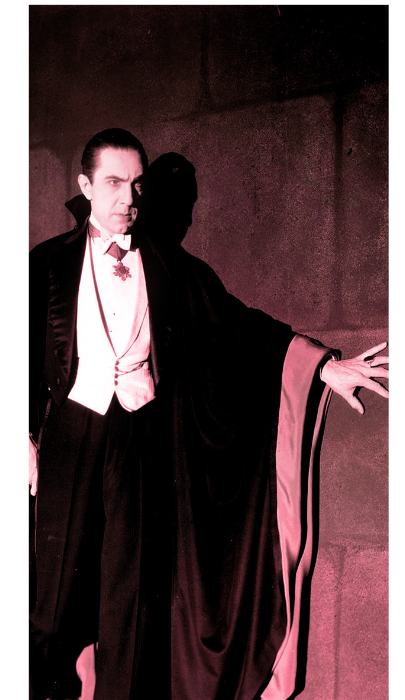
Dermot Carmody
Just after Halloween, on November 5th, Donnybrook writer and actor Brendan Ellis brings his dramatic adaptation of Bram Stoker’s Dracula to life. Fear not the unwanted, doom-laden dental attentions of the count however, for the production will come to life on consecrated ground within the sanctuary of Sandford Church.
Since the publication of the novel Dracula in 1897 by the Dublin-born novelist Bram Stoker, the accursed, blood-drinking Transylvanian noble has lived in the public imagination and in a myriad of subsequent adaptations in many different forms. There have been hundreds of film adaptations. The earliest surviving one is FW Murnau’s 1922 silent film Nosferatu. Stoker’s estate sued the producers and all prints were ordered destroyed. However several illegal prints survive to this day. It is notoriously difficult to kill a vampire film.
There have also been operas, musicals, ballets, books, comics and video games, but the first stage adaptation was written by Bram Stoker himself. It had a single performance at the Lyceum Theatre in London a few days before the novel itself was published. The main purpose of the production was to establish stage copyright for the material and it took a cast of 15 four hours to perform. Ellis’s new adaptation has a cast of a similar size but is far pithier at around an hour and a half in duration.
Stoker’s novel is narrated through letters, telegrams, diary entries and newspaper articles. In it Jonathan Harker, a solicitor, journeys to Dracula’s castle in the Carpathian Mountains to complete the purchase of a house in England. Dracula abandons him to the deadly ministrations of three female vampires in the castle, but Harker escapes. Dracula then moves to the seaside town of Whitby. He eventually attacks and drinks the blood of Harker’s fiance, Mina. A group of people led by Professor Abraham Van Helsing begin a quest to prevent Mina becoming a vampire on her death by chasing and destroying Dracula in his homeland.
That is a very brief and insubstantial outline of the plot of the novel, which Brendan describes as “a long novel, complicated and clever, and sometimes boring.” He characterises the novel as a story of forensic detection in which “young, healthy, well-educated young men of the upper and middle classes fight the good fight, overcoming all, even in their natural reluctance to commit criminal and sometimes gross acts.”
Ellis’s dramatization gives voices to the main protagonists, but also parallel voices to their diaries and journals, with different actors often voicing the spoken dialogue and the written narratives of the same character. A number of musical interludes throughout provide further texture to the piece.
In the play as in the novel Dracula is absent in person from proceedings for a lot of the time, which can make it easy to forget that he is the main character. Ellis describes him as a tragic hero, “the fairytale prince caught up in a foul and evil spell which he is powerless to overcome or resist.”
Brendan Ellis’s Dracula is the latest of several productions over the years, many but not all of which were part of the programme of the Ranelagh Arts Festival, that make use of performance resources within the community. Some of these have taken existing text as their basis, as was the case some years ago for a reading of Dylan Thomas’s Under Milk Wood. Other performances have combined music with poetry, while some like this play and a previous one on the life of the Dublin balladeer Zozimus are writings and adaptations by Ellis himself. All of the shows have shared the excitement of a group of people – performers and audience – coming together to create a unique event. Like a carefully curated flash mob, in fact. They are always entertaining and life-enhancing events (undead protagonists notwithstanding), and this one should be well worth experiencing too.
Dracula, by Brendan Ellis from the novel by Bram Stoker, will be performed in Sandford Church at 7.30pm on November 5th. Admission is free.



